
We are taking off from KLIA2, the vast port of Air Asia and other budget airlines.
In the distance you can see KLIA used by other airlines and with its own control tower.
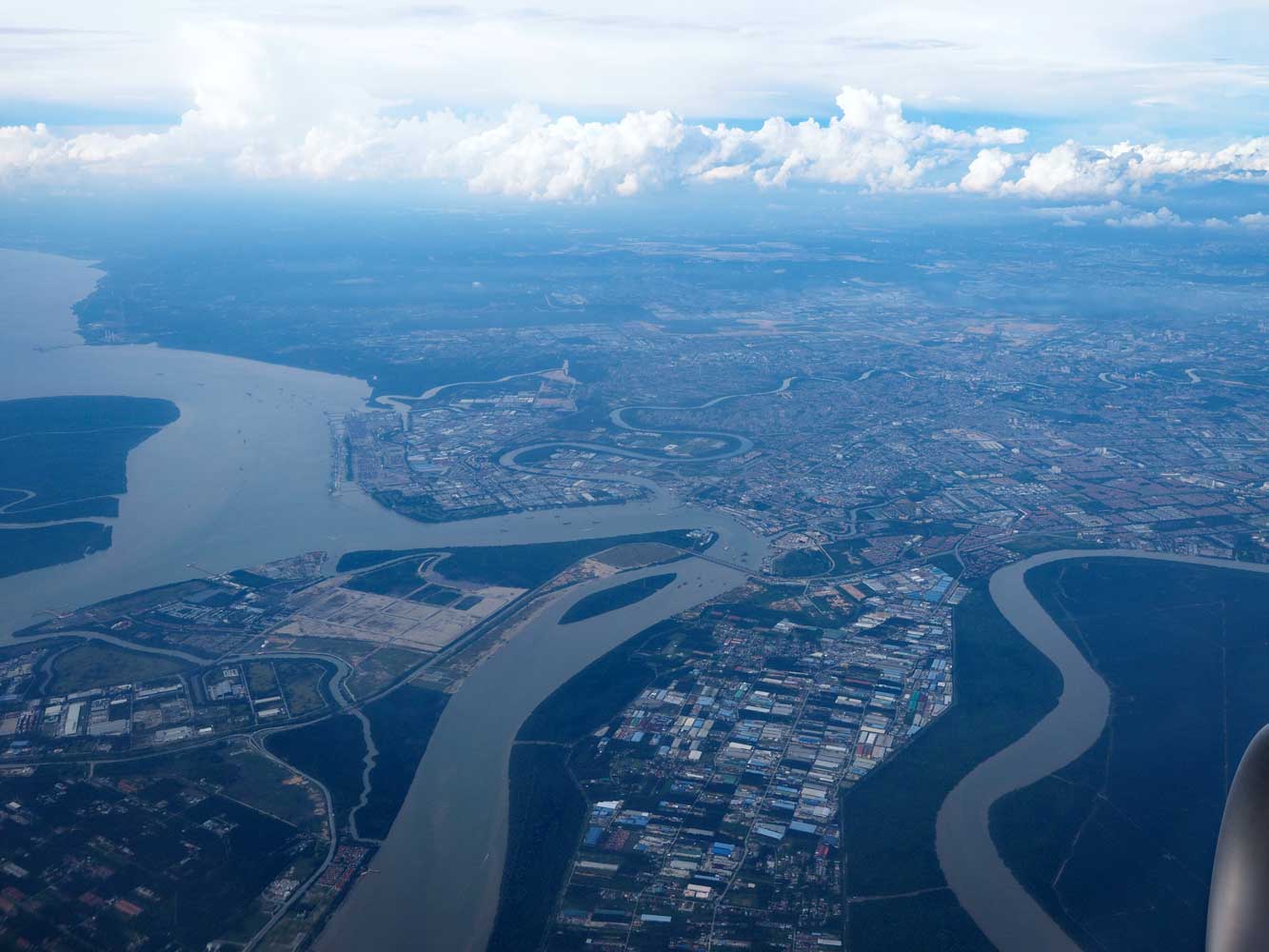
The maze of rivers and estuaries on the west coast of Malaysia
25 November Krabi
Now I return to Thailand for scuba diving in the Andaman
Sea! This will be on a liveaboard out of Khao Lak with Similan Diving Safaris
www.similan-diving-safaris.com/index.html.
It would have been a long overland journey from Kuala Lumpur, so I looked into flying
and found that although Phuket would be the closest airport, I could get a cheaper
fare to Krabi. So I chose the Krabi option and booked Air Asia AK 860. The flight
didn’t depart until 5:05 p.m., so after checking out of my Airbnb, I swung by the
MTR restaurant in Brickfields for an excellent South Indian thali, nearly the same
as I had enjoyed there last night. Then I got a bus to the airport, but I forgot
to specify the terminal and was given a ticket to KLIA—the main terminal—where I
had to take a short train ride to KLIA2 for the huge complex used by Air Asia. I
had paid a little extra for a window seat in the front and enjoyed views of the
rivers and coastline of Malaysia as the flight swung out over the Andaman Sea.

We are taking
off from KLIA2, the vast port of Air Asia and other budget airlines.
In the distance
you can see KLIA used by other airlines and with its own control tower.

The maze of
rivers and estuaries on the west coast of Malaysia
The plane climbed into clouds, then descended through hazy sunshine over southern
Thailand’s extensive oil palm and rubber plantations. After 1:20 in the air, I landed
at Krabi’s small airport, well equipped with an international terminal. Immigration
went far faster than in Bangkok, and I got a shuttle bus toward town, but rather
than drop me off near my accommodations on the way, the bus went all the way downtown,
where a van took me to my Airbnb at White House, close to the bus station and main
highway. The room was very spacious and clean—better than I’m accustomed too!
26 November Khao Lak
I easily got a minibus in the morning for the nearly three-hour
ride inland and along the coast to Khao Lak, where I would be boarding the liveaboard
boat tomorrow. The ride went through pretty scenery with sheer limestone pinnacles
and, near the end, views of the coast. I got a 400-baht room at Happy House next
door to the dive shop, then met up with dive staff and some of the divers for the
five-day liveaboard excursion. Lastly, I had a fine Penang curry at Spinach Restaurant,
enjoying the flavors and presentation.
27 November Andaman Sea
When
I had signed up a few weeks ago for this trip, I was the only person, but more people
had joined since and we delayed our departure a bit for a few more to arrive today.
A short minivan ride took us to south the port and our home for the next five days,
the Similan Explorer. We would be 15 divers, 4 dive leaders, and 5-person
Thai boat crew. We had a profession underwater photographer onboard, Krzysztof
Bargiel, who would swim among each of the groups to snap well-composed portraits
of us plus the abundant sea life. He also took short videos and offered a
package of everything, which I purchased and transferred to my computer. You can
also see his beautiful photography at
www.facebook.com/krisbargie
Shortly after sunset we motored off and one of the Thai crew paid
respects by offering incense to a shrine at the bow of the boat. Next, a crewman
lit a string of firecrackers wrapped around a stick to chase off any bad spirits
before we headed into the open sea.

Taking no chances: Paying respects to good spirits.
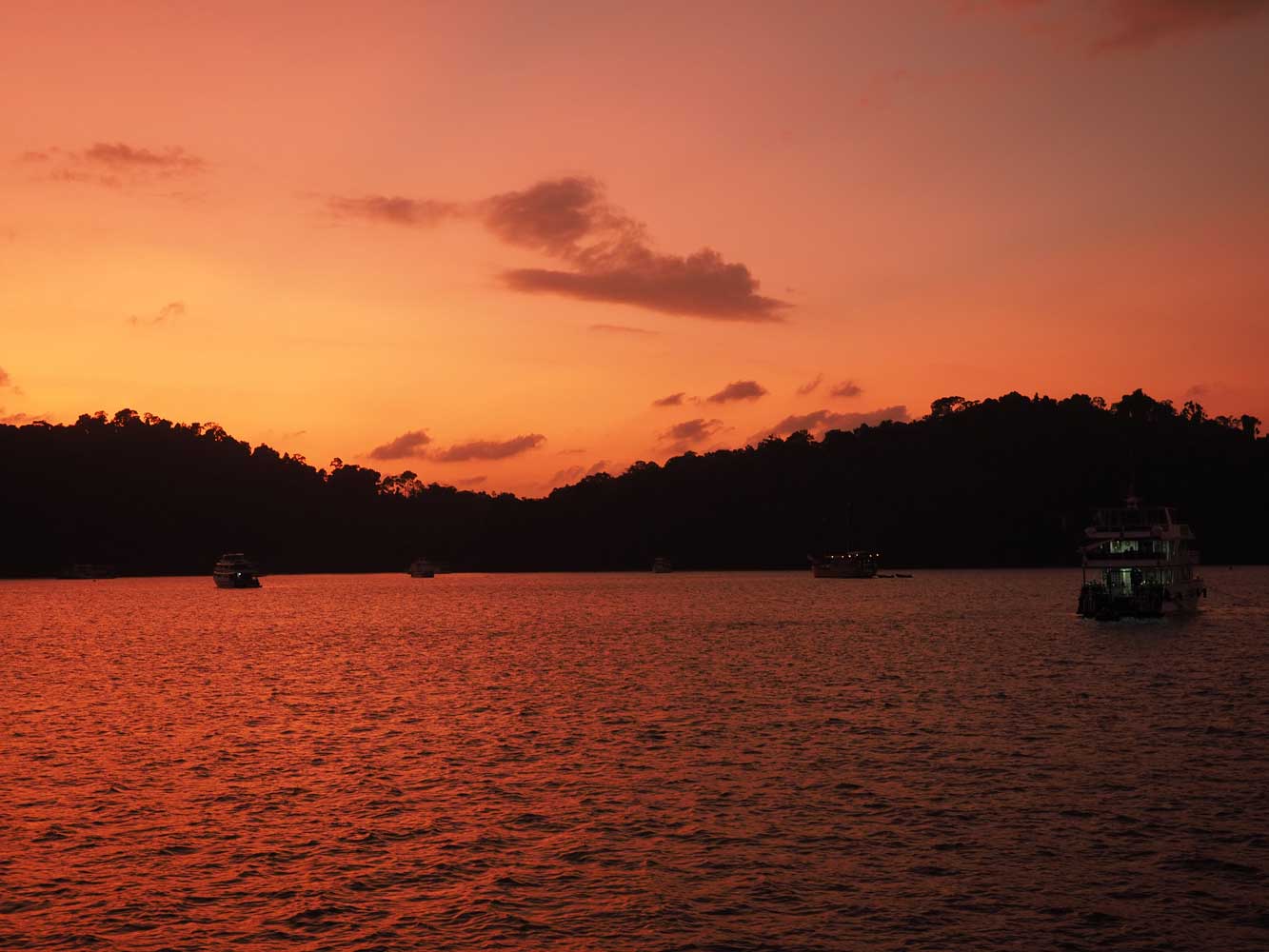
A flaming sunset before
we motor off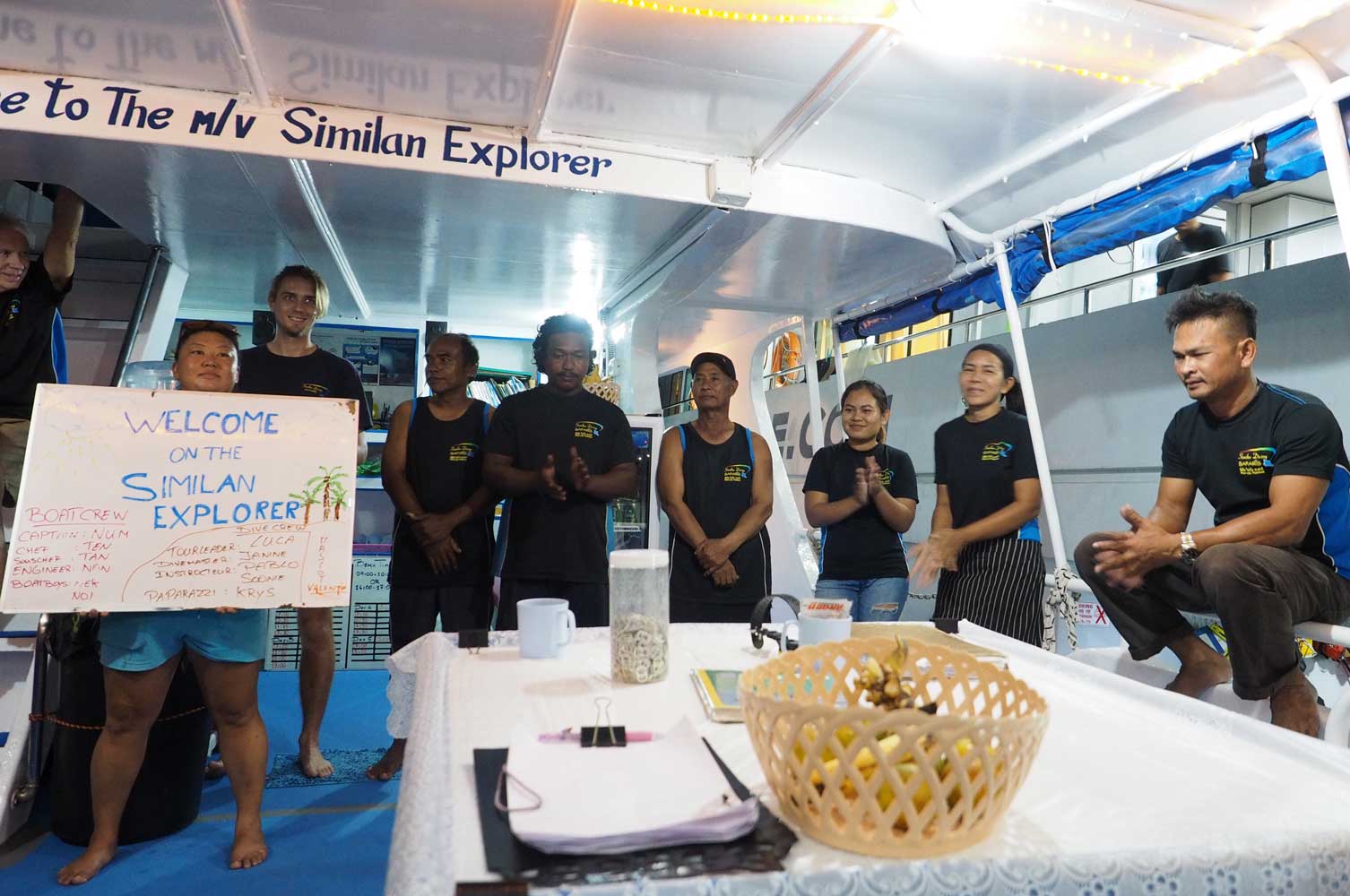
The dive crew (left) welcomes us and introduces the Thai crew (right).
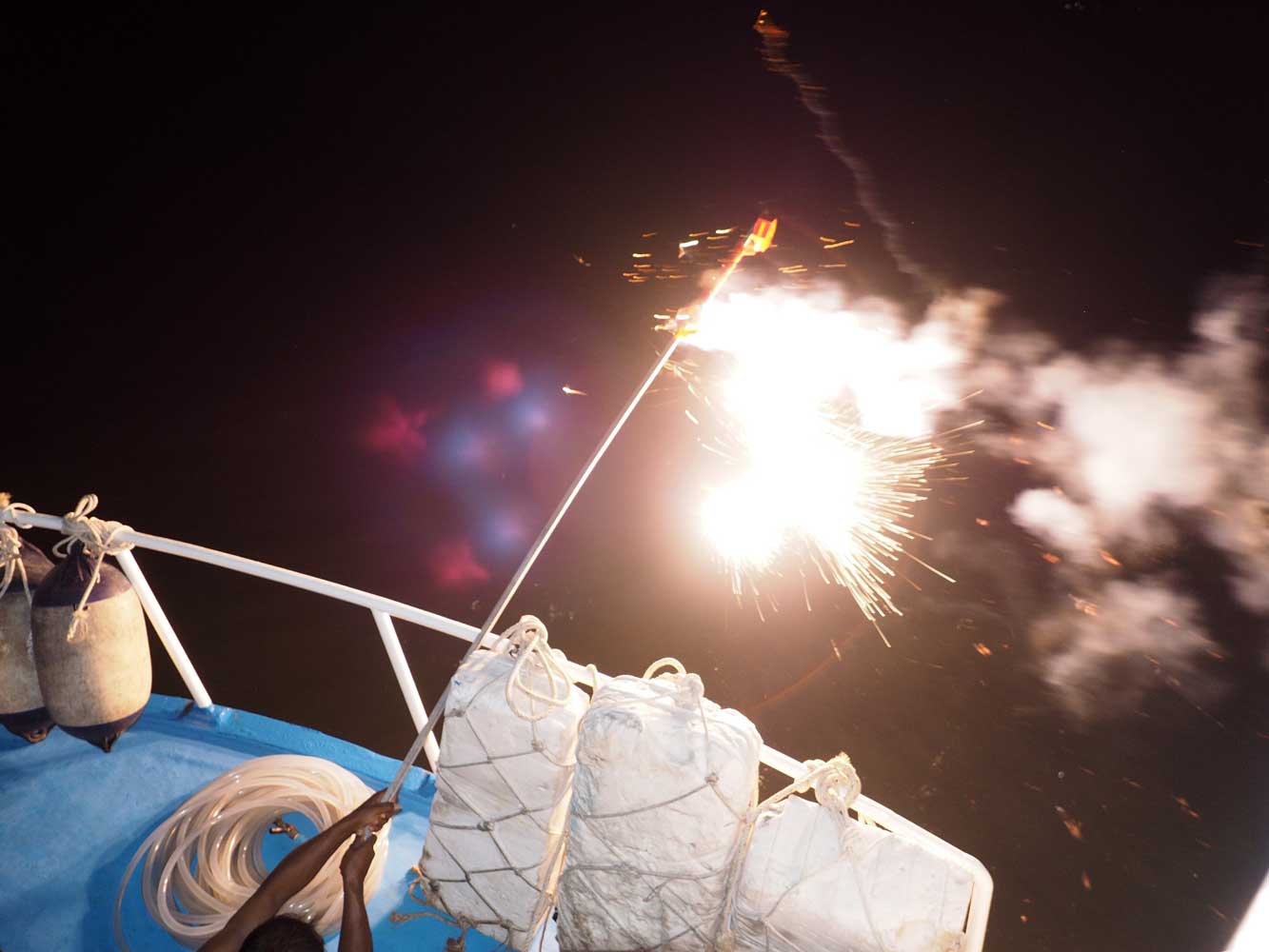
As we head off and
turn the corner around a peninsula, which has
a shrine, fireworks wrapped around
a stick go off in a blaze of glory!
28 November Andaman Sea
Our little boat did a lot of rolling last night,
and despite taking a motion-sickness-prevention tablet, I felt a bit out-of-sorts
on the first dive, at Hideaway on the south side of Similan Island #5. Yet last
night’s dinner stayed down and I felt good to be back in the sea. The 57-minute
dive swung by the tuna wreck, lying on its side, and weaved among the hard and soft
corals. We saw a great many fish, most with bright colors or prominent patterns.
I don’t know why the sea creatures have such features, but there must be good reasons!
Each fish has its niche—resting on the bottom, hiding in cracks, hanging out near
the corals, living in poisonous anemones, swirling over the corals in dense clouds,
or hunting in the open water. We saw a cuttlefish, an intriguing creature with slits
for eye pupils and an undulating membrane skirt for moving through the water. A
sea snake with distinct white-and-black banding slithered through narrow crevices
in search of a snack; although the snake’s venom is very toxic, divers are not on
the menu. Triggerfish are the only fish that commonly attack divers, but they do
this only when nesting, and the ones we saw this morning were peacefully foraging
for food.
The second dive went down at West of Eden, a dive site near
Similan Island #7. Again, lots of corals and fish among the giant granite boulders,
though some areas of sea floor had mostly dead coral. Sometimes we could see splendid
garden eels poking their heads above their tunnels in the sand and facing the current;
they are very shy and retreat if anything approaches. Giant eels—at the other end
of the size spectrum—display sharp-looking teeth though ignore us divers. I caught
a glimpse of a peacock mantis shrimp, a relatively large species with a colorful
body and exceptionally good vision in their stalk-mounted eyes.
The
afternoon dive meandered through even bigger granite boulders and picturesque swim-throughs
at Elephant Head, off the southern tip of Similan Island #8. Giant barracuda, with
their long sleek silvery bodies prowled above while tiny pipefish (related to seahorses)
clung to corals near the bottom. We got to see Kuhl’s stingrays and the diminutive
and very pretty ribbon eel, which we knew as a male because of its black coloration.
When the sun went down, we did too! Our night dive began at 7 p.m. at Ao Nam Chai
between Similan Islands #8 and #9. Some fish go to sleep, and the parrotfish even
wraps itself in a mucus cocoon, said to prevent nocturnal predators from sniffing
it out. Crabs, including a decorated spider crab, and shrimp come out to forage.
We saw lots of filter feeders such as feather stars. Flatworms are pretty to watch
as they undulate through the water; their body is so thin that they can ‘breathe’
through their skin and don’t need gills. A moray eel and bobtail squid made appearances
as well. Although both lionfish and scorpionfish have extremely toxic spines, the
scorpionfish uses camouflage and stealth to catch prey while the ungainly lionfish
have dramatic white and red strips and showy ‘plumage’-like fins yet still manage
to catch their meals.
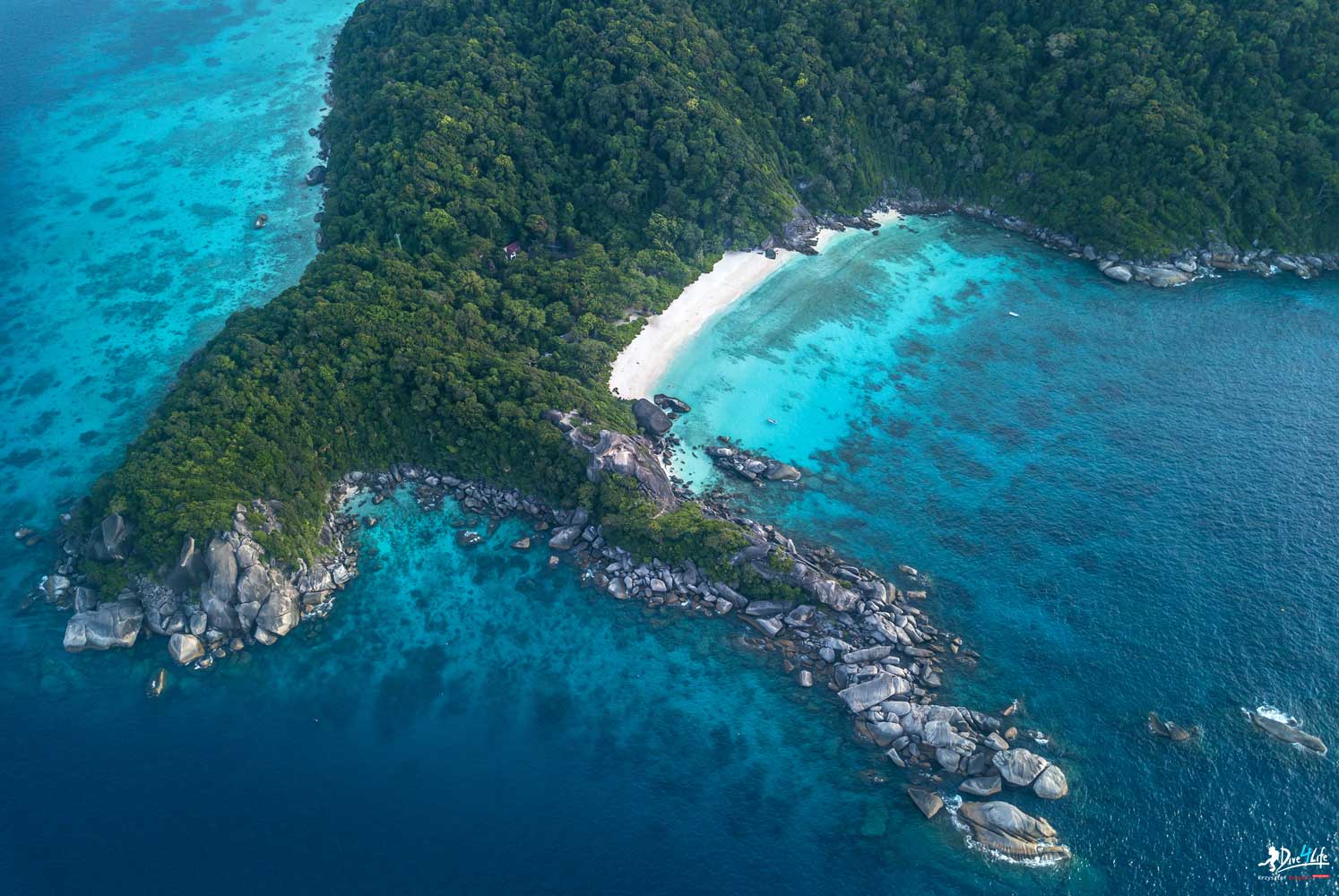
Donald Duck Bay on Similan Island #8 is a popular shore excursion for divers.

The banded sea krait (Laticauda colubrina) is very agile in the water!
They return to land
to digest their prey, rest, and to reproduce.
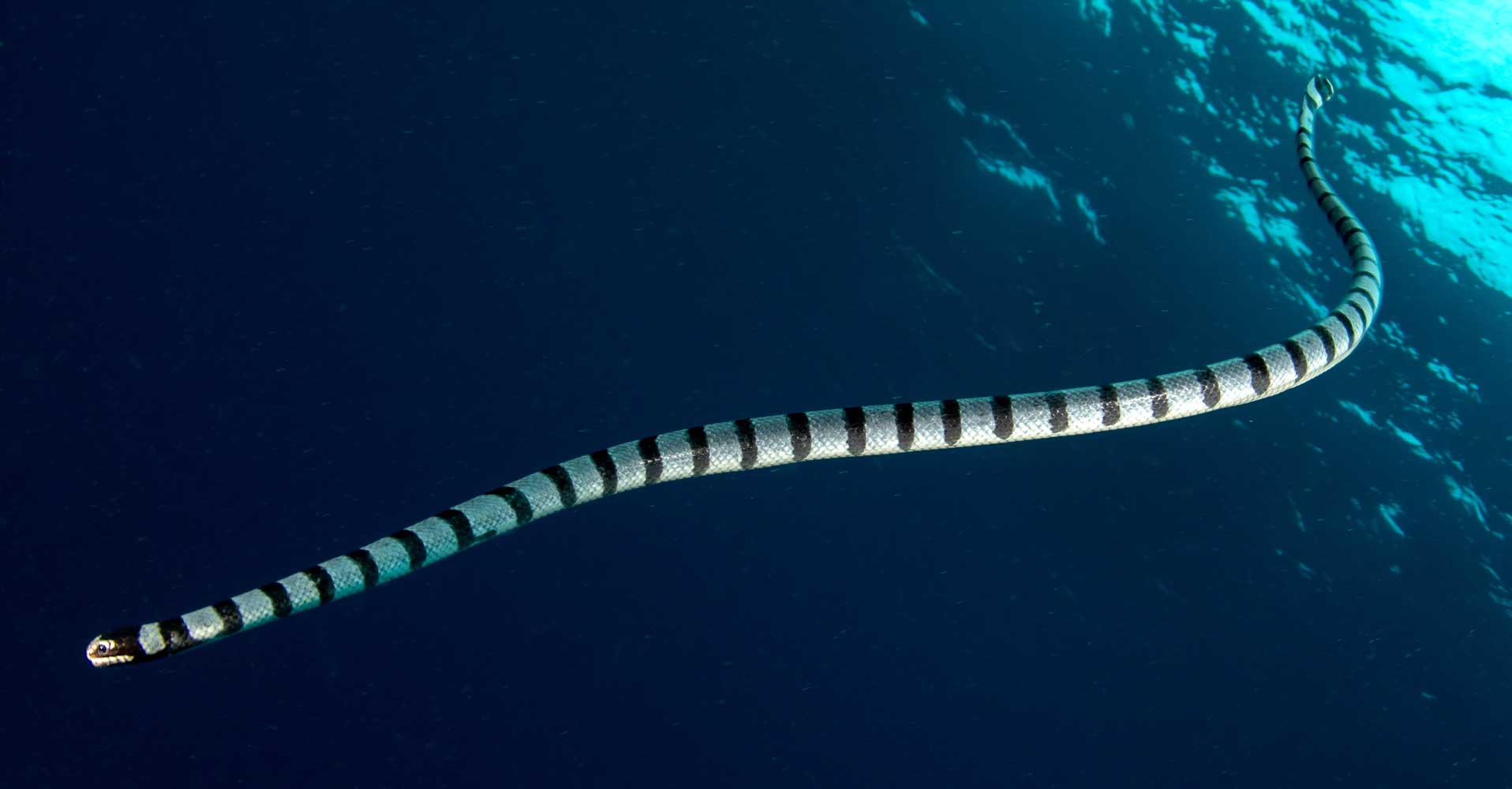
You can see the paddle-shaped tail, which enables the sea krait to travel five times
faster in water than on land. They primarily feed on varieties of eels, but
also eat small fish.

I’m admiring a sea fan, which flourish around the Similan Islands.
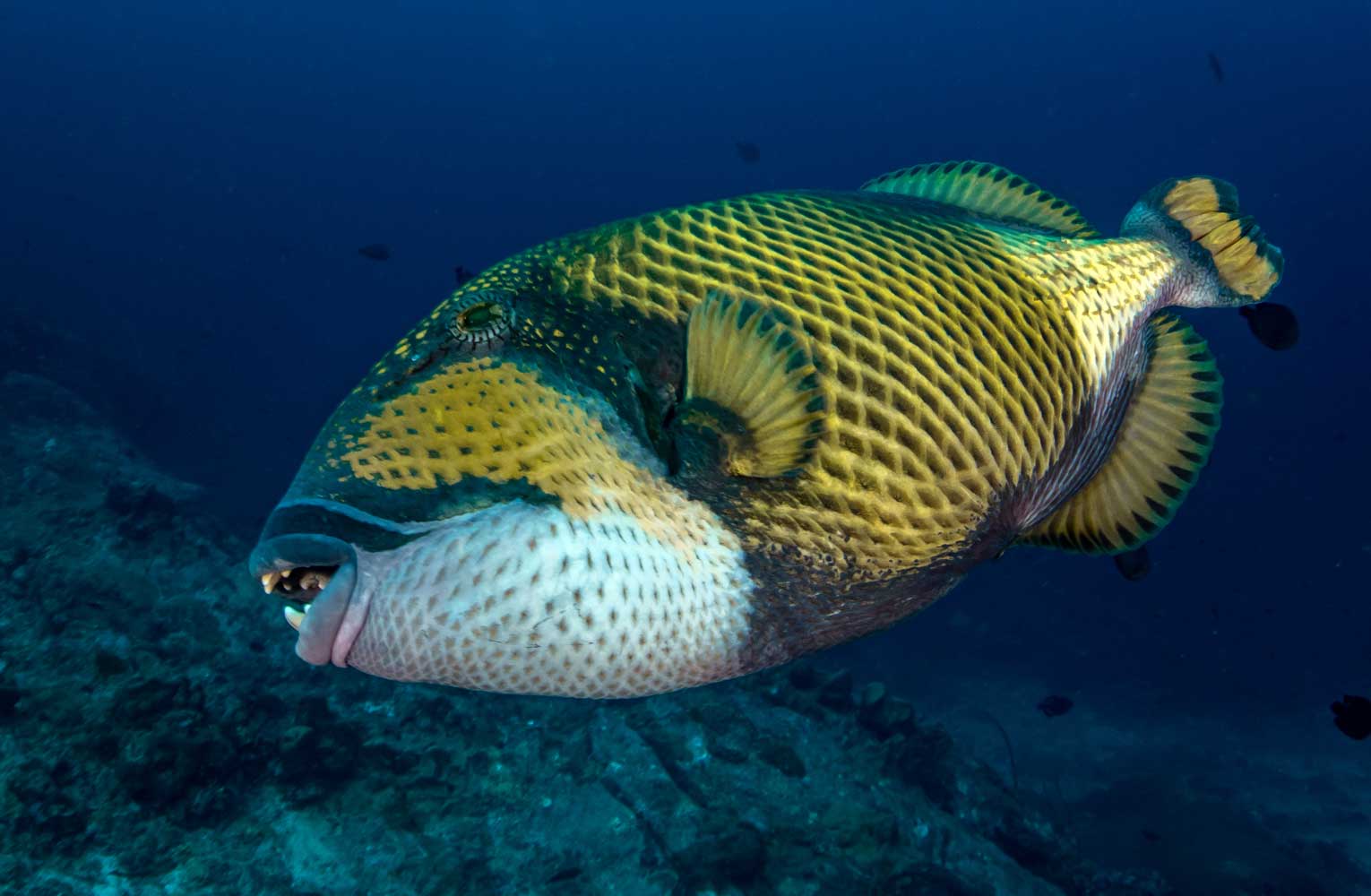
Titan triggerfish (Balistoides viridescens) have strong teeth!
There are about
40 species of triggerfish in the family Balistidaehas.

Barrel sponges may have a lifespan exceeding 2000 years!
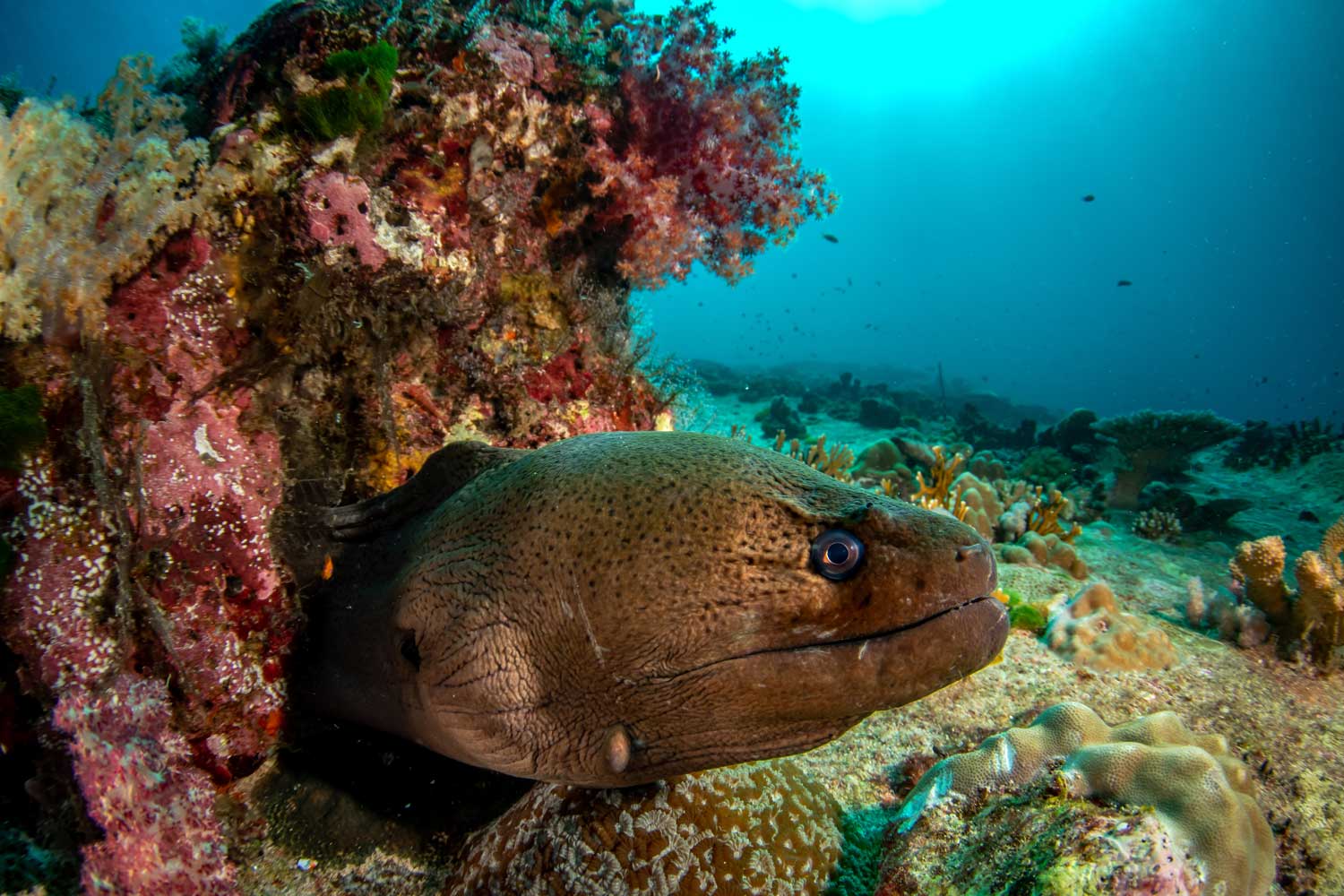
The giant moray (Gymnothorax javanicus) is the largest moray eel and
can reach up to 3 meters (9.8 ft) in length and 30 kg. (66 lb)
in weight.
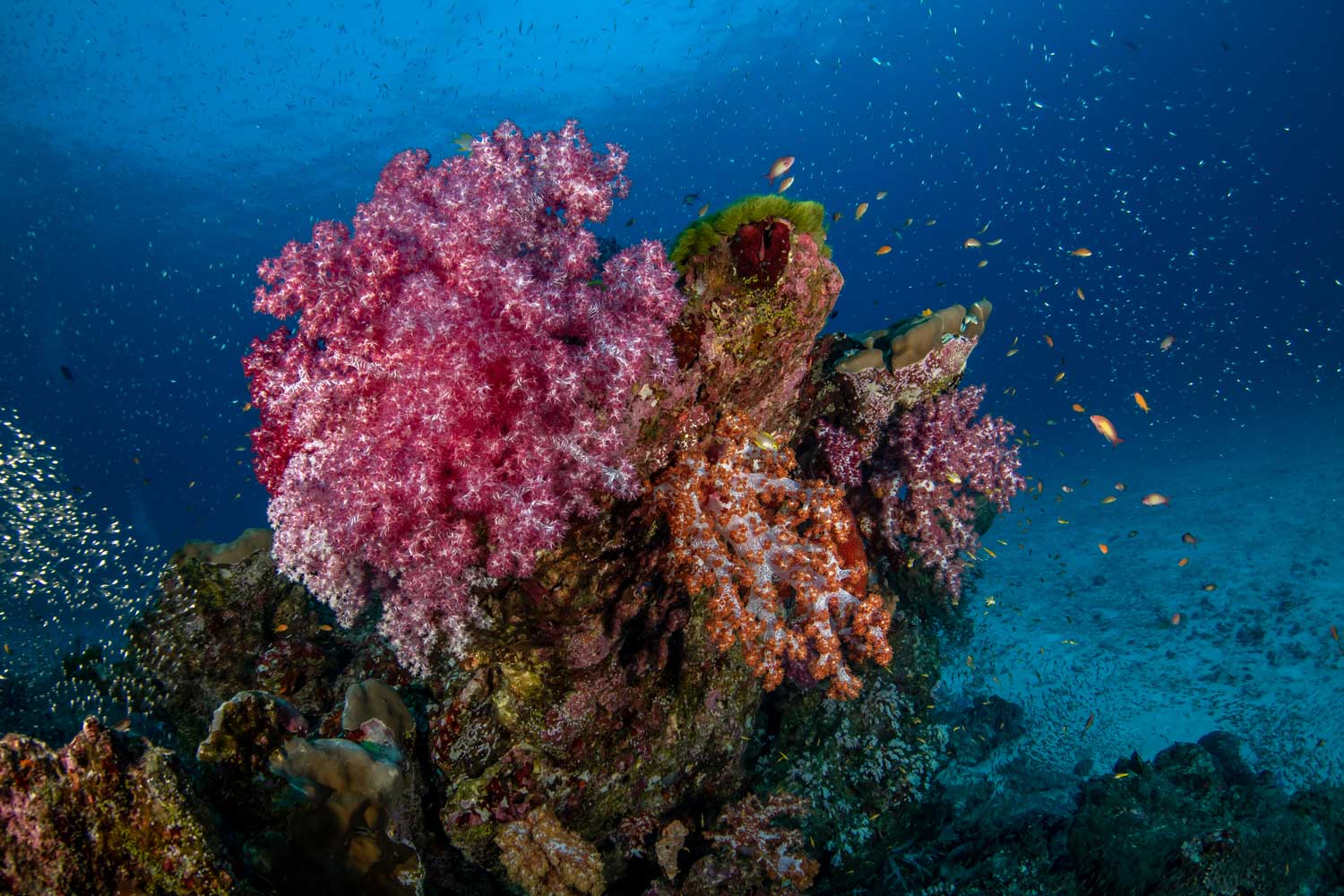
Soft corals come in beautiful hues.
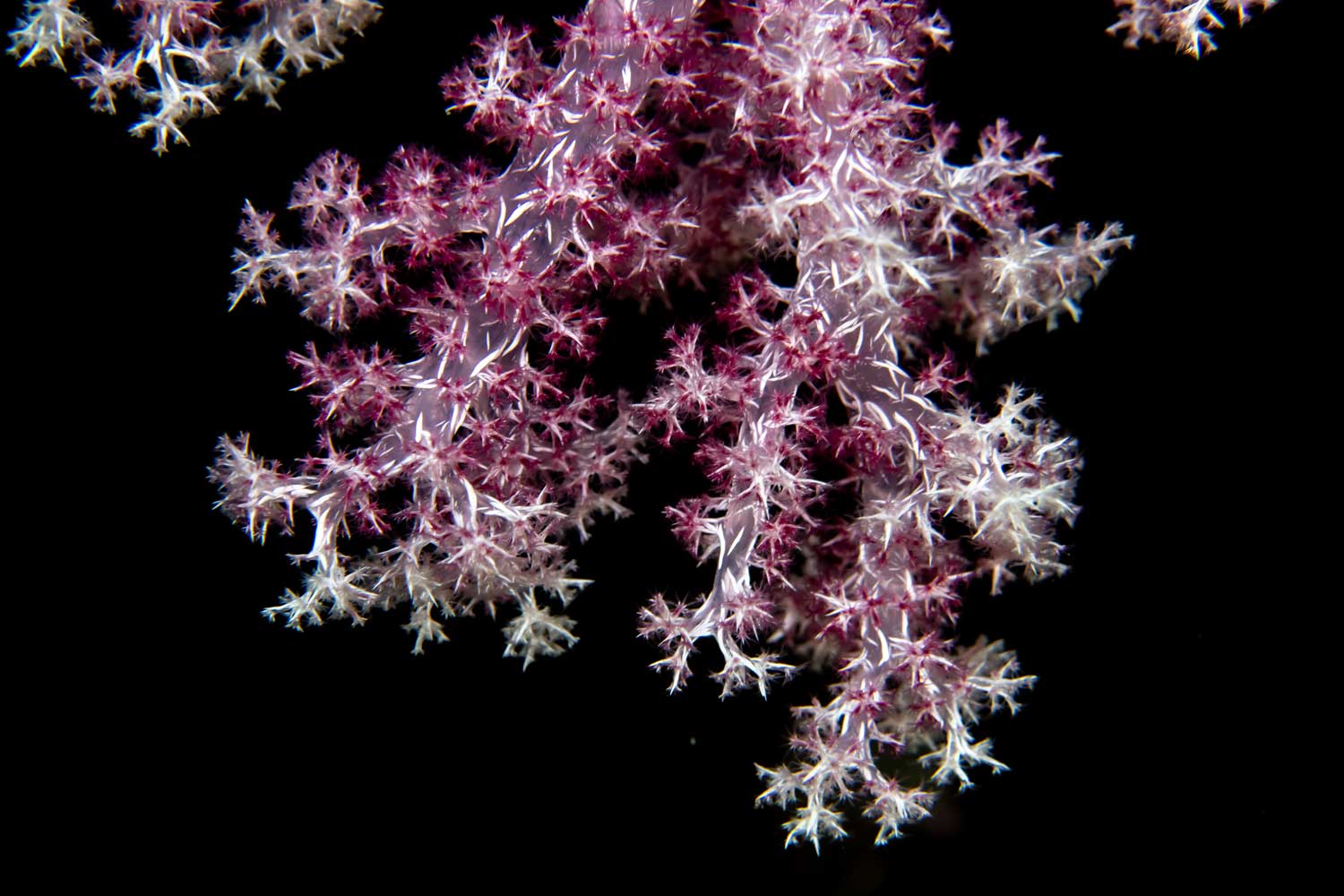
Soft coral close-up
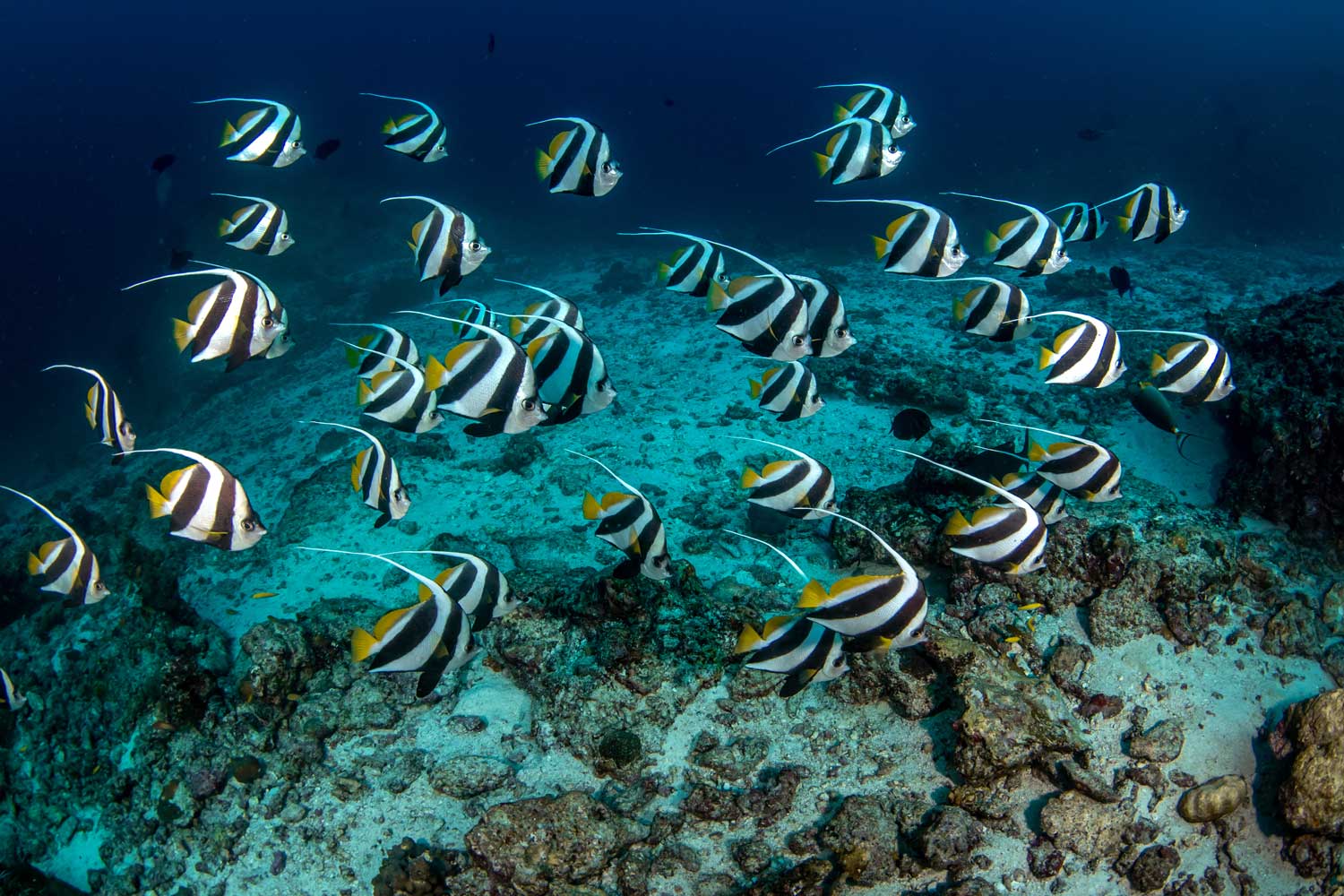
Schooling bannerfish (Heniochus diphreutes), also known as false moorish idols,
are a butterflyfish.
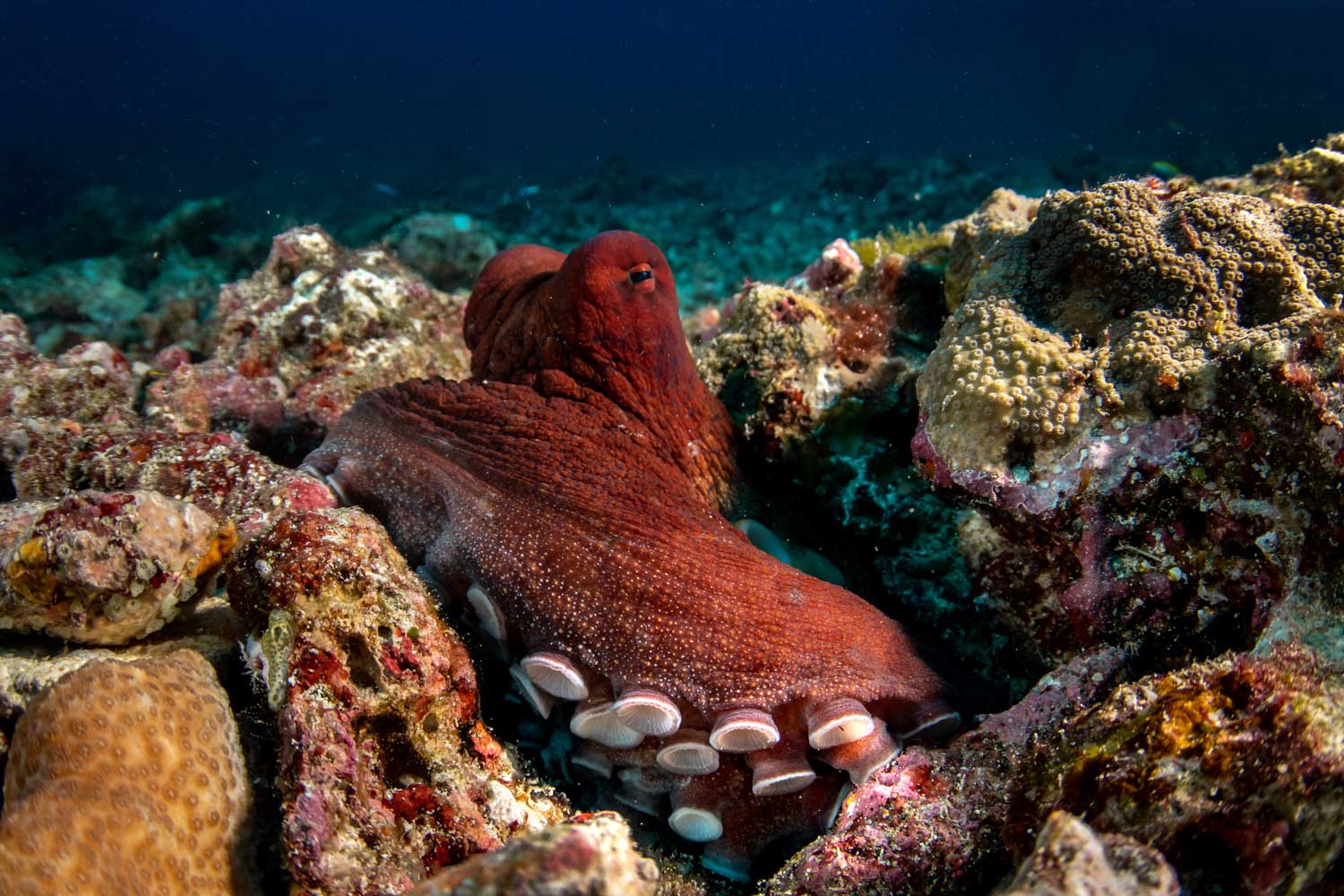
This may be a day octopus (Octopus cyanea), a master of camouflage that can change
not only the color and patterns
on its skin, but also its texture. A researcher
observed one change its appearance a thousand times in seven hours!
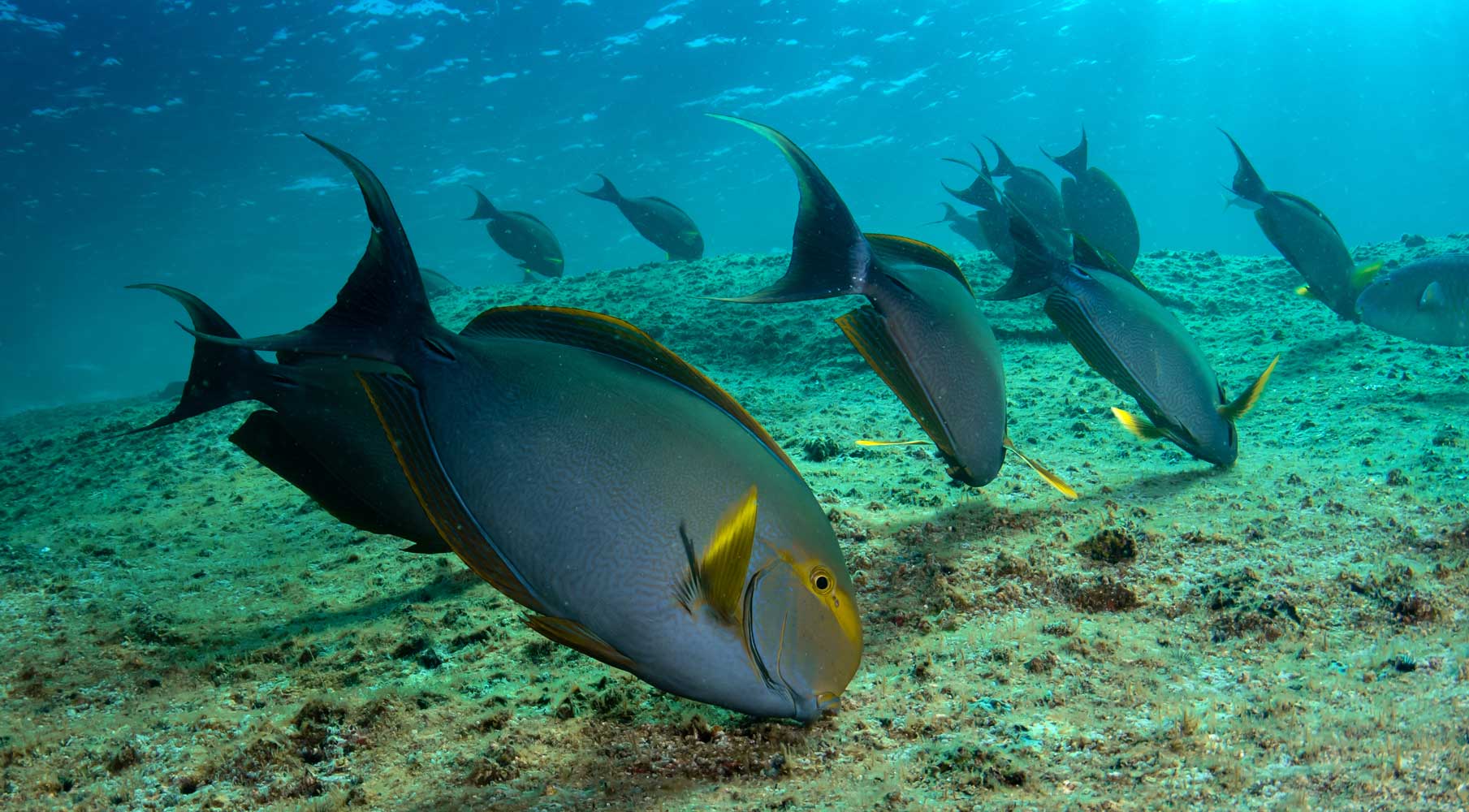
These may be yellowfin surgeonfish (Acanthurus xanthopterus), part of a family of
about 86 species of
surgeonfishes, tangs, and unicornfish. All have one or more
scalpel-like spines on each side at the base of the tail.
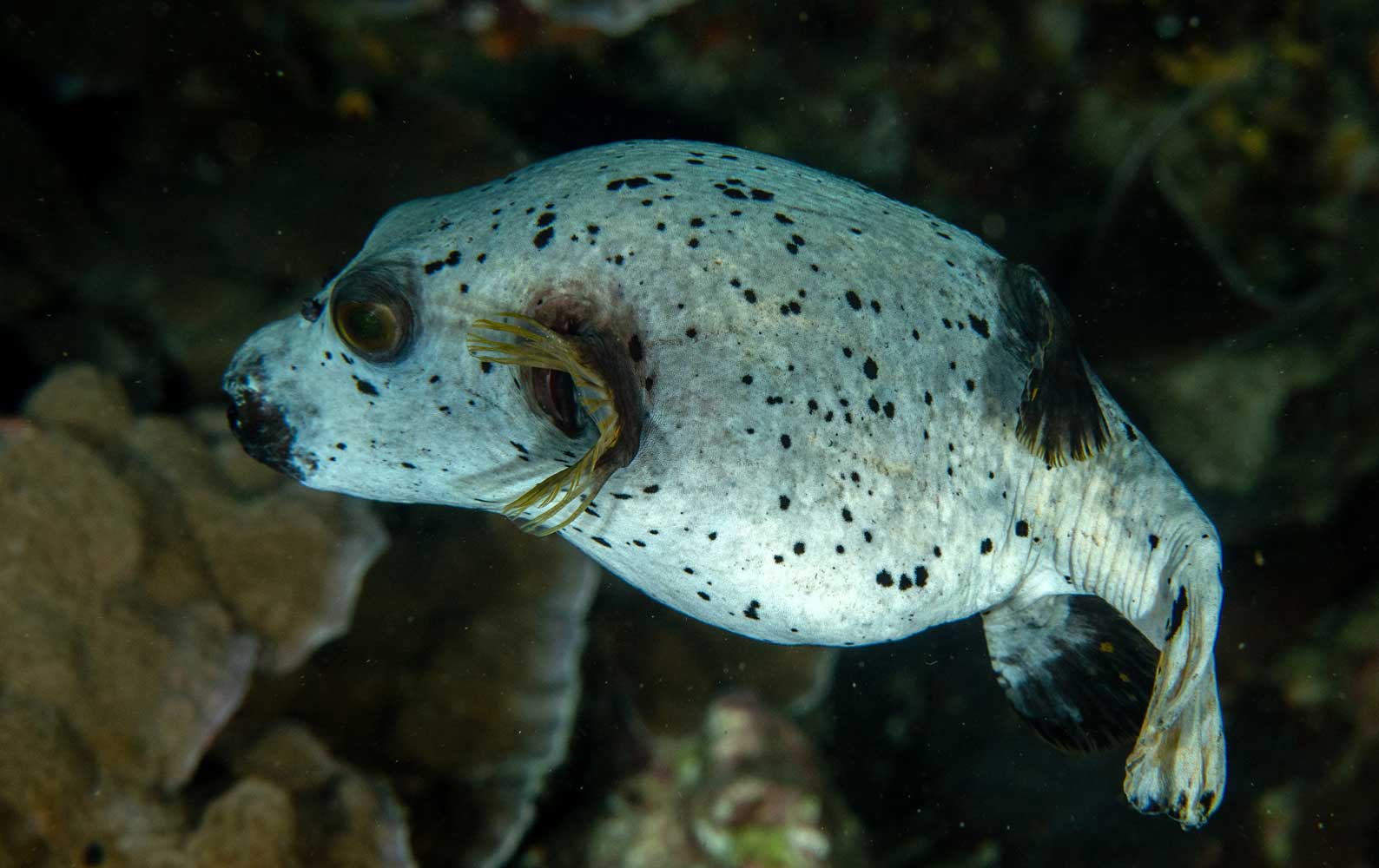
Blackspotted puffer (Arothron nigropunctatus)
Almost all pufferfish contain
tetrodotoxin that makes them foul tasting and often lethal to other fish.
It’s said
that one pufferfish has enough toxin to kill 30 adult humans, and there’s no known
antidote.
29 November Andaman Sea
Our daily routine continued: an early
morning dive at 7 a.m., breakfast, rest, late-morning dive at 11 a.m., lunch, rest,
early afternoon dive at 2 p.m., snack, rest, sunset (5 p.m.) or night (7 p.m.) dive,
dinner, rest, and repeat the next day! Although diving is relaxing, it’s still tiring
and can be strenuous at times when going against a strong current. We try to take
advantage of currents by hopping in the water at one end of a dive site, then drifting
through it and getting picked up by the boat at the other side of the site. I and
most of the divers used a mixed gas called ‘Nitrox’ that has about a 30% oxygen
content to reduce nitrogen absorption; this lets us stay down longer and is said
to reduce tiredness. I recently purchased a diving computer that continuously makes
calculations about nitrogen absorption at the varying depths and times. But it is
not failsafe, as I later found out.
We first dove at Three Trees, named
for a trio of prominent trees on Similan Island #9. On this drift dive with the
current we saw a bunch of Kuhl’s rays, pufferfish, the ‘perfectly painted’ powderblue
surgeonfish, the large Napoleon wrasse, parrotfish, oriental sweetlips, and a hawksbill
turtle. We got down to 27.5 meters, averaged a depth of 17 meters, and stayed in
the water just under an hour.
Our dive at North Point off Similan Island
#9 also went deep, to 30 meters, as far as we go in sport diving. I liked swimming
among the giant boulders and their canyons, but the shallows had a lot of depressing-looking
dead coral rubble. We saw a porcupine ray and a lot of big fish including grouper,
yellowfin and longnosed emperorfish, and Napoleon wrasse.
Koh Bon,
an island between the Similans and Surins, is unique for being composed of limestone
while all the others are granite. That affects the underwater world with spectacular
cliffs off the west ridge. A strong current gave us a workout on the north side
of the ridge. Lots of staghorn and other hard corals grow in the depths. Tiny cleaner
wrasses like to pick off parasites and dead skin from big fish, but can be overeager
and annoy both fish and divers—one kept nipping at my ears! A pair of small fish
engaged in head-butting just like goats, then they somehow interlocked their dorsal
fins and spun around for several seconds, something goats cannot do!
Just
like people, fish enjoy having a good dinner, and become especially active in seeking
food around sunset. So we jumped in about 5 p.m., again at Koh Bon, and watched
the lively fishy scene.
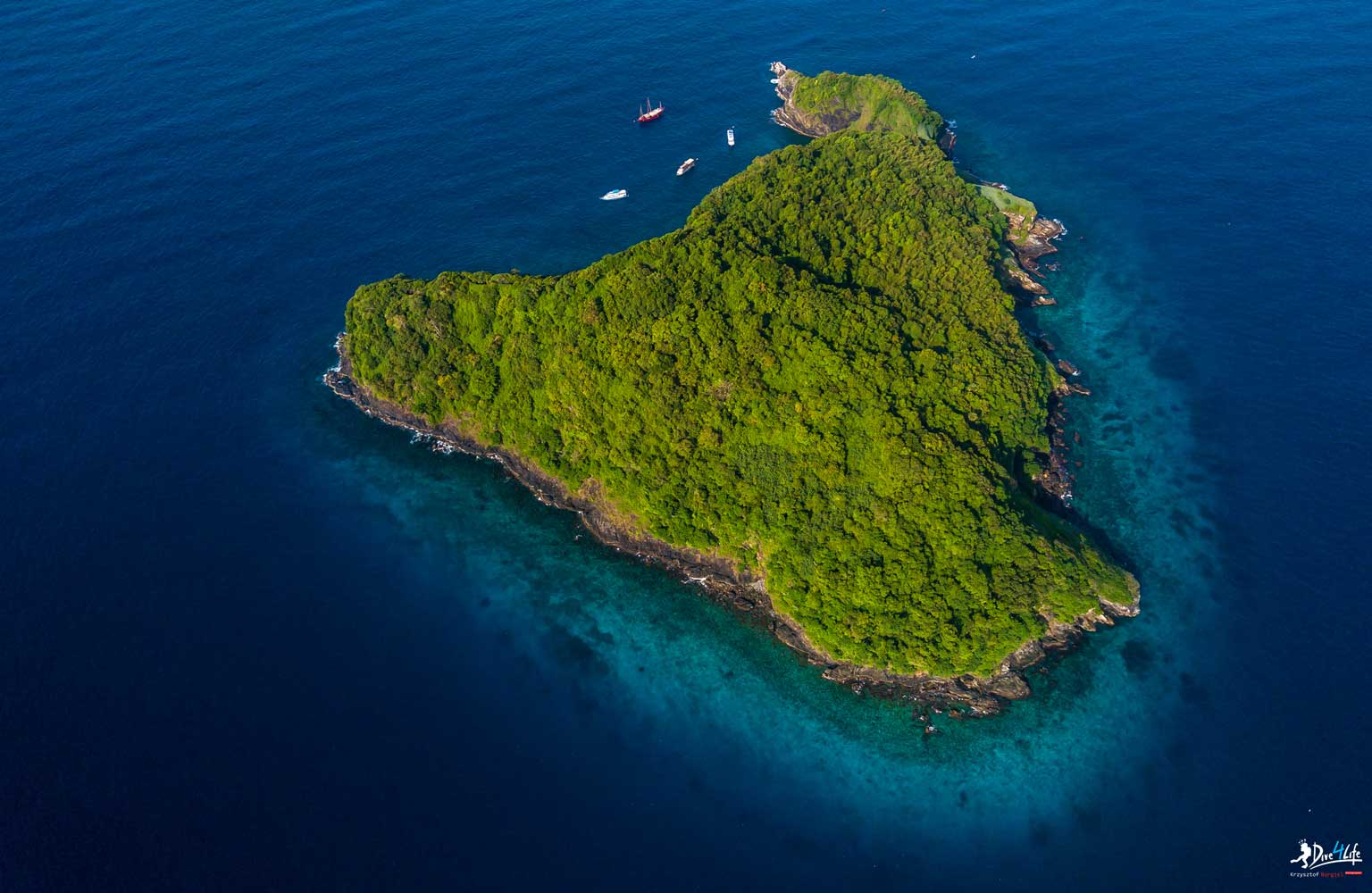
Koh Bon
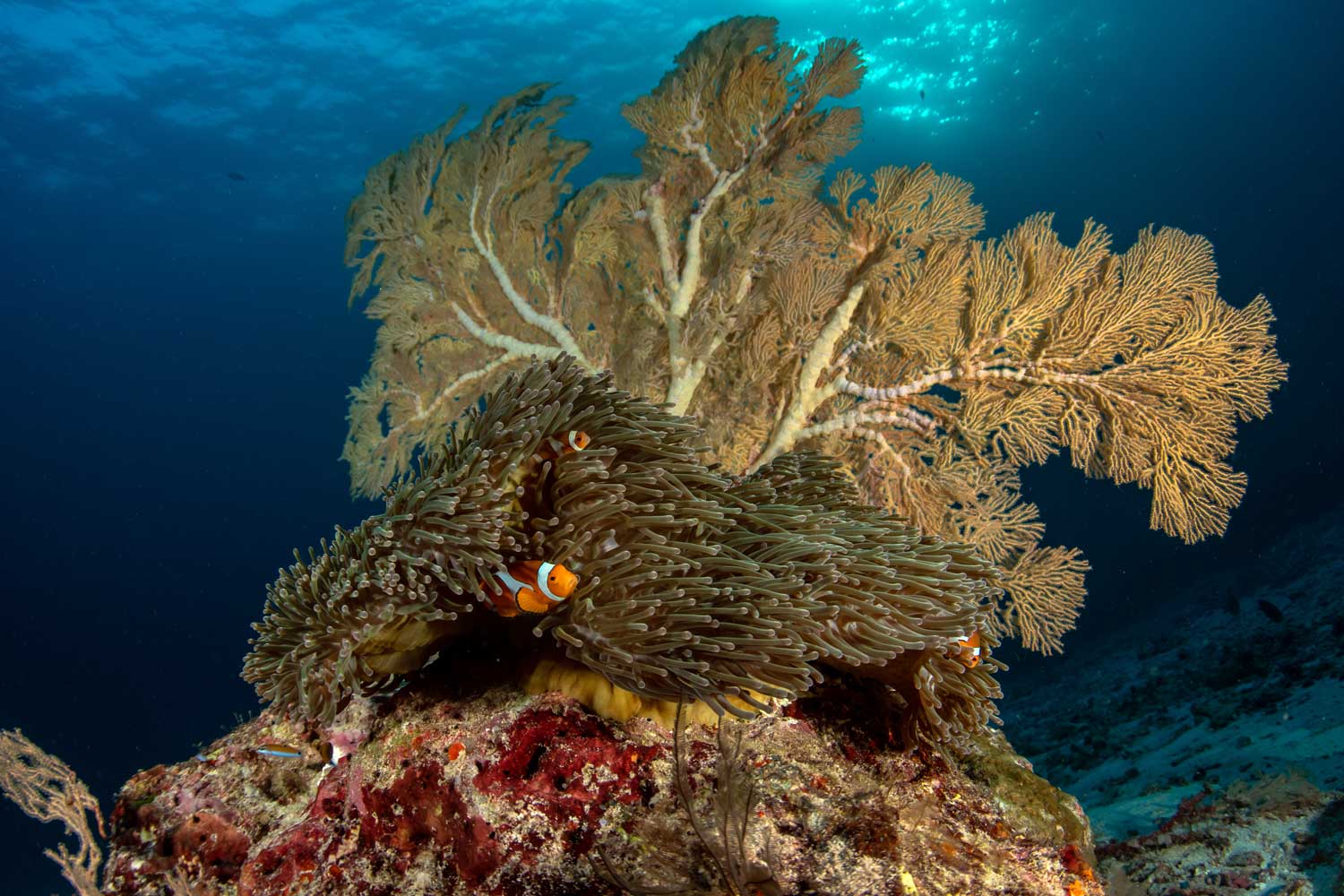
Clownfish
comically dart in and out of their protective anemones to confront a diver who
gets too close!
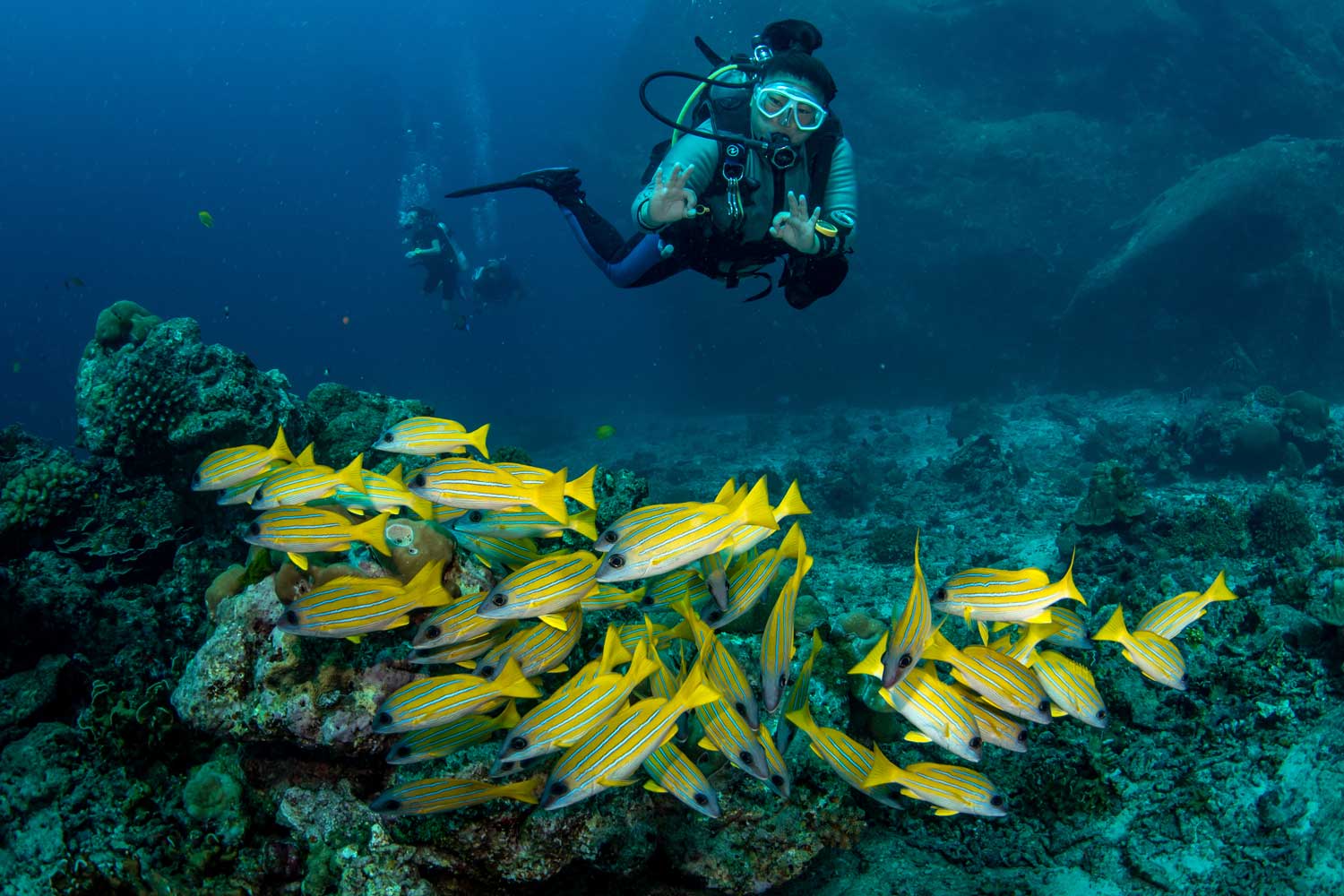
Soon-ie says
hello to a school of bluestripe snappers (Lutjanus kasmira).

Floating
through a magical underwater world

A bluespotted
stingray (Neotrygon kuhlii) cruises past. It preys on many fish and
small mollusks.

Dive leader
Luca clowns for the camera.

Luca holds an
inflatable safety sausage that sticks up on the surface while
we wait about
5 minutes at 5 meters to reduce the nitrogen in our systems.

I have just
surfaced after the sunset dive.
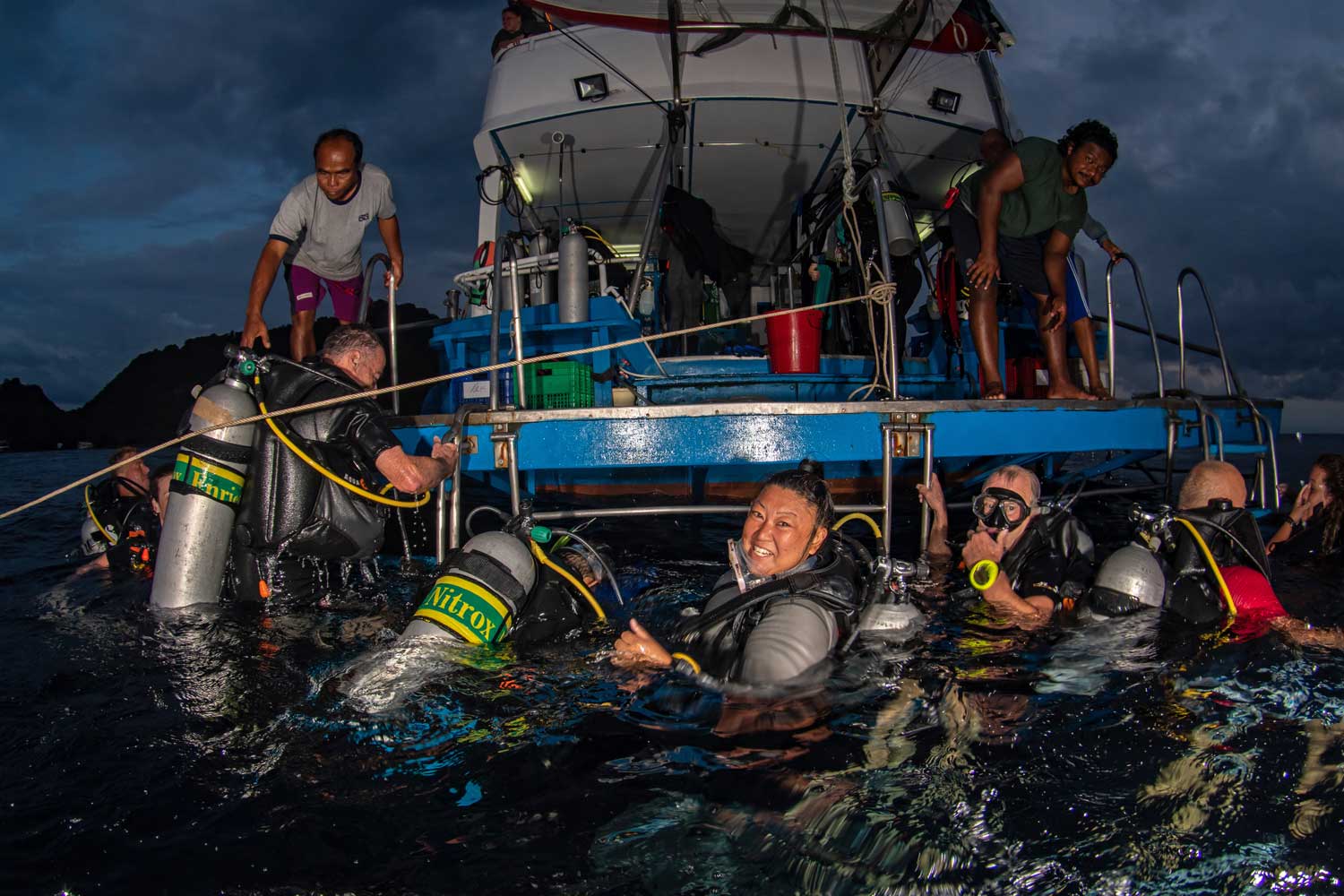
I am climbing
up a ladder at the stern of the boat; this is the toughest part of a dive
because the gear is so heavy!
On to scuba diving in Thailand’s Andaman Sea Part 2
Back to Beginning of Southeast Asia Backpacking Nov.-Dec. 2018